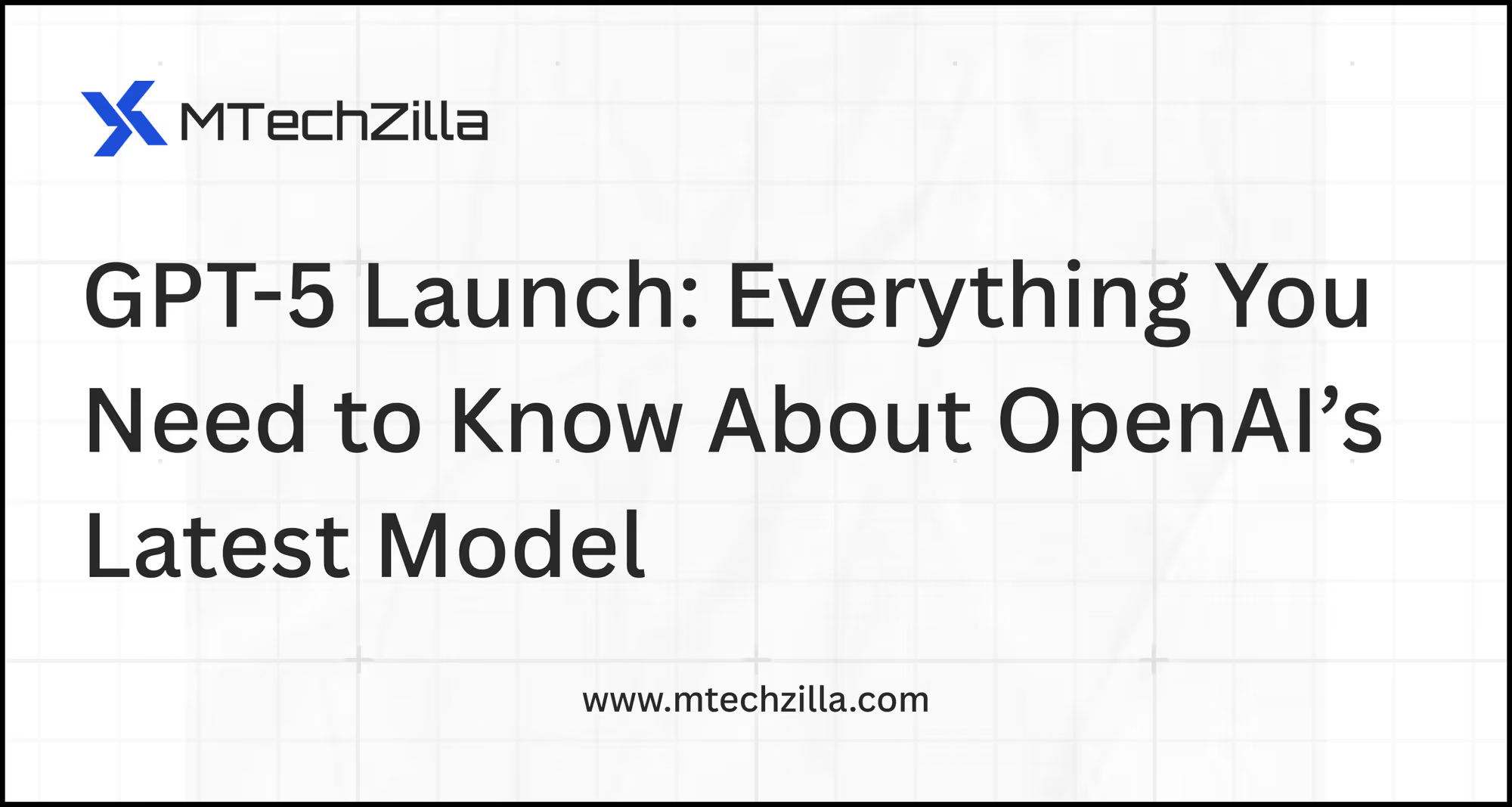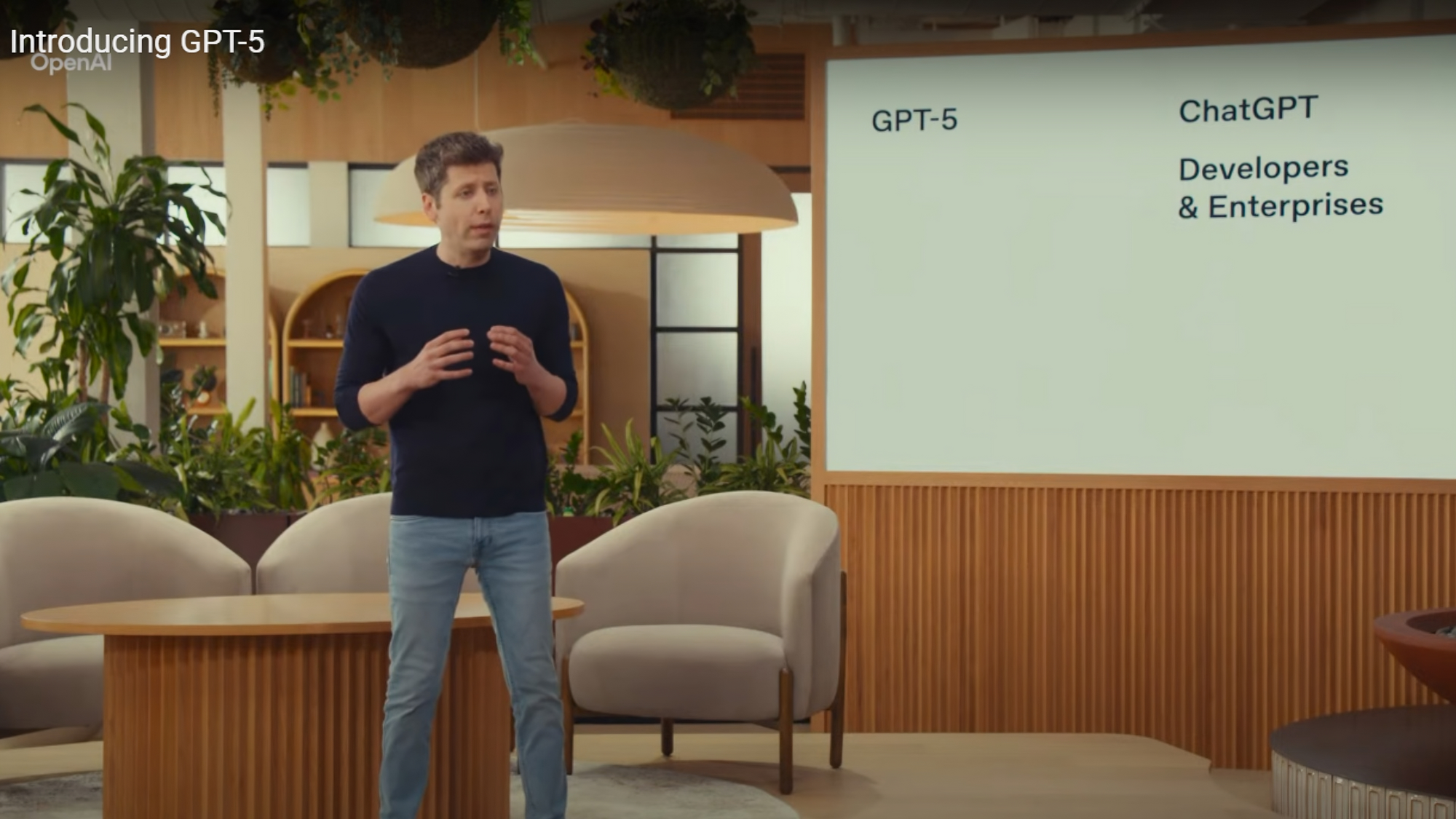August 8, 2025
8 min read

GPT-5 is OpenAI’s most advanced AI model yet, taking a big step forward from GPT-4. OpenAI CEO Sam Altman called the difference as big as going from a college student to a PhD expert. The model is now the default in ChatGPT, meaning everyone has access to it — not just developers or tech experts.
GPT-5 is also available in smaller versions:

GPT-5 isn’t just a small upgrade. It's a big step forward in how AI understands and interacts with the world. Its improvements across different areas make it one of the most advanced and powerful AI models developed so far.
GPT-5 works as one single, smart system. Older models often used different parts for different tasks, but GPT-5 combines everything into one smooth setup. This helps it respond in a more natural and accurate way.
One of the standout features is something called a real-time decision router. This feature looks at each user’s input and decides how much brainpower is needed to answer. If the question is simple, it replies quickly. But if it’s a tough problem that needs deeper thinking, it sends the query through a more detailed process. This helps GPT-5 give the best answers while using resources smartly.
GPT-5 shows major improvements in several important fields:
a) Better Writing Skills
GPT-5 is noticeably better at writing. It creates text that is clearer, more accurate, and more natural to read. Whether it’s writing marketing content, technical documents, or even stories, GPT-5 can match the tone and style needed for the task with great precision.
b) Stronger Math Skills
Math has always been tricky for AI, but GPT-5 has made a big leap here. It can solve problems more accurately and even explain the steps it takes to get to the answer. This is especially helpful for learning and research purposes.
c) Smarter in Health-Related Topics
GPT-5 has improved its understanding of health questions. It can now respond more accurately and carefully when discussing health-related topics. OpenAI has also made sure GPT-5 is safer—it avoids giving risky or misleading health advice and focuses on sharing helpful and appropriate information.
GPT-5 is OpenAI’s most advanced coding model so far. It doesn’t just generate pieces of code. It can handle more complex tasks across different areas.
a) Front-End Development
GPT-5 can write code for user interfaces with high accuracy, making front-end development faster and easier.
b) Debugging Code
Fixing bugs in code usually takes a lot of time. GPT-5 is better at finding and fixing errors, helping developers get accurate solutions quickly.
c) Creating Apps from Just a Prompt
One of the most impressive features of GPT-5 is its ability to build complete apps just from a user’s prompt. Even people with no coding background can describe what they want in plain language, and GPT-5 can generate the working code. This opens the door for more people to turn their ideas into real software.
One common issue with language models has been "hallucinations," where the AI gives incorrect information. With GPT-5, OpenAI has made big improvements to reduce these errors.
The model now gives more accurate and trustworthy answers. It also has better safety features. Instead of simply refusing to respond to risky questions, GPT-5 can now provide safer and more helpful replies, with a better understanding of context and ethics. This helps build more trust in the way people use AI.
GPT-5 now gives users more control over how the AI responds. You can choose from different preset personalities like Cynic, Robot, Listener, or Nerd.
Each one has a different tone and style, helping you get answers that match the kind of conversation you prefer. This makes GPT-5 feel more personal and flexible depending on your needs.
Also, GPT-5 is now available to everyone using ChatGPT. Free users get access to powerful features, and those who subscribe to ChatGPT Plus or the new GPT-5 Pro can use even more advanced tools and higher limits, which is great for professionals or heavy users.
GPT-5 is much better at handling complex tasks step by step. It can now connect multiple tools and services in one go, helping it complete bigger and more advanced jobs.
This means the AI can work like an assistant that does things for you, such as calling external services or running workflows, without needing you to guide it every step of the way. These improved capabilities make GPT-5 smarter at solving problems and more helpful when it comes to automation.
GPT-5 brings major improvements over earlier models like GPT-4o and OpenAI o3, thanks to a new training approach. OpenAI focused on three core areas: better reasoning, fewer mistakes, and stronger safety measures.
One of the biggest changes in GPT-5 is its ability to reason more deeply when needed. This internal "thinking" process helps it solve harder problems more effectively than previous models.
This shows GPT-5 is not just generating code—it understands complex projects and can edit across multiple languages with high accuracy.
OpenAI worked hard to make GPT-5 more trustworthy and accurate. It now gives more factually correct answers and is better at recognizing its own limits.
This makes GPT-5 far more honest—it’s more likely to say, “I can’t do this,” than to guess or pretend it knows the answer.

OpenAI trained GPT-5 using a new method called “safe completions.” Instead of refusing to answer tricky questions with a generic response, GPT-5 tries to be more helpful while staying safe.
OpenAI has officially begun rolling out GPT‑5 across multiple user tiers and platforms. Here’s a breakdown of where and how GPT‑5 is available:
GPT‑5 is available through the OpenAI API in three variants: gpt-5, gpt-5-mini, gpt-5-nano. Developers can select the variant that best fits their needs for performance, cost, and latency.
The launch of GPT-5 is an important milestone in the progress of artificial intelligence. It brings better abilities, more reliable responses, and easier access, which can change how we work, learn, and use technology.
Whether it’s improving how software is built, helping with scientific discoveries, boosting creativity, or making everyday tasks more efficient, GPT-5 is set to drive innovation in many different fields. As more people and developers start using it, we’re likely to see new ideas and applications that were hard to imagine before.
This is just the beginning of a new chapter in AI, and GPT-5 is leading the way forward.
GPT‑5 is OpenAI’s latest and most advanced language model. While GPT-4o was optimized for speed and multimodal capabilities, GPT-5 is expected to take a bigger leap in reasoning, memory, long conversations, and task handling. It’s more advanced in understanding context, generating accurate responses, and assisting across complex workflows.
Yes, GPT‑5 is now available for everyone, even if you are using ChatGPT for free. This is a big change from how OpenAI did things earlier.
Yes. You can use GPT-5 for free. OpenAI has made it the default model for all users, including the free tier. However, there are usage caps for free users. Once you hit the cap, you will be switched to a smaller model, GPT-5 mini, until your usage resets.
While OpenAI hasn’t shared full benchmarks yet, GPT-5 is expected to show improvements in:


Share your product idea and challenges

Discuss possible approaches and solutions

Define a roadmap for your project